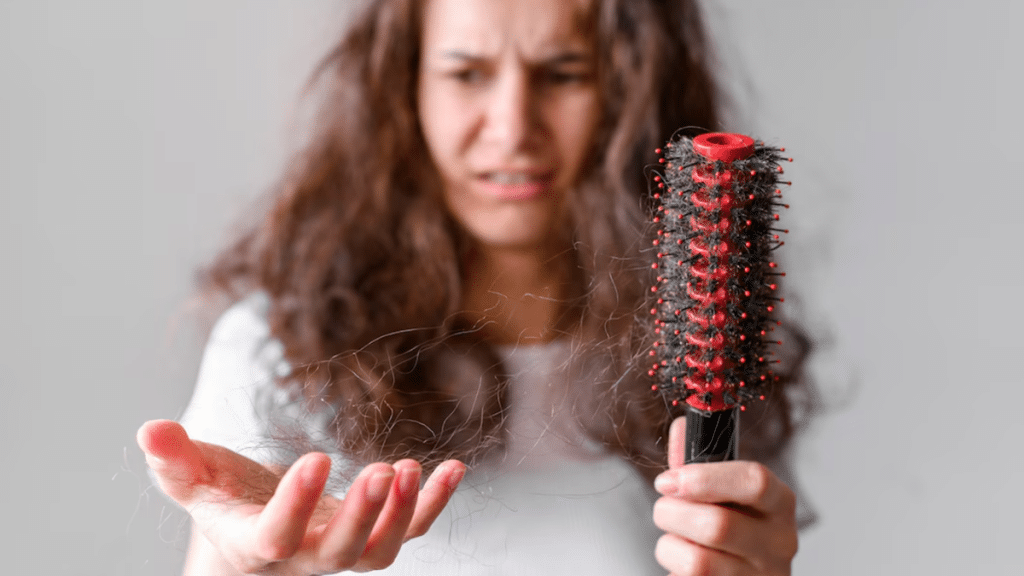Introduction
Anagen effluvium, frequently triggered by medical treatments such as chemotherapy, can result in substantial hair loss. While hair loss is the primary concern, the related pigmentation issues can also be troubling. These changes may appear as dark spots, patches, or uneven skin tone, affecting one’s self-esteem and overall appearance. Given the prevalence of pigmentation concern, coupled with the potential for anagen effluvium-related pigmentation, exploring effective pigmentation treatment in Mumbai becomes crucial. In this article, we will delve into the top 5 pigmentation treatments to address anagen effluvium, helping you regain clear and even-toned skin.
Understanding Anagen Effluvium
Causes of Anagen Effluvium
Anagen effluvium occurs when hair follicles are abruptly damaged, often due to chemotherapy, radiation therapy, or toxic substances. This disruption in the hair growth phase leads to rapid hair loss.
Symptoms and Diagnosis
The primary symptom is sudden hair loss, but pigmentation changes can also occur. Diagnosing anagen effluvium typically involves a physical examination and reviewing the patient’s medical history, particularly recent exposure to chemotherapy or other toxins.
The Importance of Treating Pigmentation
Psychological and Emotional Impact

Pigmentation issues can significantly affect one’s confidence and self-worth. Treating these issues is not just about aesthetics; it’s about improving mental and emotional well-being.
Long-term Skin Health
Addressing pigmentation helps in maintaining healthy skin, preventing further complications like scarring or permanent discoloration.
Top 5 Pigmentation Treatments
Topical Treatments
Topical treatments are often the first line of defence against pigmentation. These treatments are applied directly to the skin and can effectively lighten dark spots and even out skin tone.
Key ingredients include hydroquinone, retinoids, vitamin C, and alpha hydroxy acids (AHAs). These components work by inhibiting melanin production and promoting skin cell turnover.
Topical treatments are generally effective but require consistent application over several weeks to months. They are best used under the guidance of a dermatologist to avoid potential side effects like skin irritation.
Laser Therapy
Laser therapy uses focused light to target and break down pigmentation. Different wavelengths of light are absorbed by the melanin in the skin, helping to lighten dark spots.
Common lasers include Q-switched lasers, fractional lasers, and picosecond lasers. Each type has its specific use and effectiveness depending on the severity of pigmentation.
Laser therapy can provide quick and noticeable results. However, it can be expensive and may require multiple sessions. Risks include skin redness, swelling, and in rare cases, worsening of pigmentation.
Chemical Peels
Chemical peels involve the application of a chemical solution to the skin, resulting in exfoliation and peeling. This process removes dead skin cells and stimulates the growth of new, evenly pigmented skin.
Peels range from superficial to deep, depending on the chemicals used. Common agents include glycolic acid, salicylic acid, and trichloroacetic acid (TCA).
The procedure is relatively quick but requires proper aftercare to protect the new skin. Sunscreen and moisturisers are essential to prevent complications.
Microneedling
Microneedling involves using fine needles to create micro-injuries in the skin, stimulating collagen production and skin renewal. This can improve pigmentation and overall skin texture.
The process typically involves numbing the skin, followed by the microneedling procedure. It may be combined with serums to enhance results.
Improvements can be seen after a few sessions, with the skin becoming more even-toned and smoother.
Natural Remedies
Natural remedies include ingredients like aloe vera, turmeric, and lemon juice. These have properties that can lighten pigmentation naturally.
DIY treatments are simple and cost-effective. For instance, applying aloe vera gel or a turmeric mask can help reduce dark spots.
While natural remedies are generally safe, their effectiveness can vary. It’s important to patch-test and use them consistently for best results.
Choosing the Right Treatment
Factors to Consider
When selecting a treatment, consider factors like the severity of pigmentation, skin type, and any underlying medical conditions. Cost and potential side effects are also important considerations.
Consulting with a Dermatologist

A dermatologist can provide personalised advice and tailor a treatment plan to your specific needs. They can also monitor progress and make adjustments as necessary.
Combining Treatments for Better Results
Synergistic Effects
Combining treatments, such as using topical creams with laser therapy, can enhance results. Synergistic effects can lead to faster and more effective outcomes.
Personalised Treatment Plans
A personalised plan that combines multiple approaches may be the most effective way to address pigmentation issues caused by anagen effluvium.
Preventing Future Pigmentation Issues
Daily Skincare Routine
A good skincare routine is crucial for preventing pigmentation. This includes using sunscreen, moisturisers, and products that promote skin health.
Protective Measures
Protecting your skin from UV exposure and avoiding harsh chemicals can prevent pigmentation from worsening. Wearing hats and protective clothing when outdoors is also beneficial.
Conclusion
Pigmentation issues related to anagen effluvium can be challenging, but with the right treatment, clear and even-toned skin is achievable. Whether you opt for topical treatments, laser therapy, chemical peels, microneedling, or natural remedies, it’s important to choose a method that suits your skin type and condition. Consulting with a dermatologist and following a personalised treatment plan can significantly enhance your results. Remember, a proactive approach to skincare and protection can prevent future pigmentation problems and keep your skin healthy and glowing.
